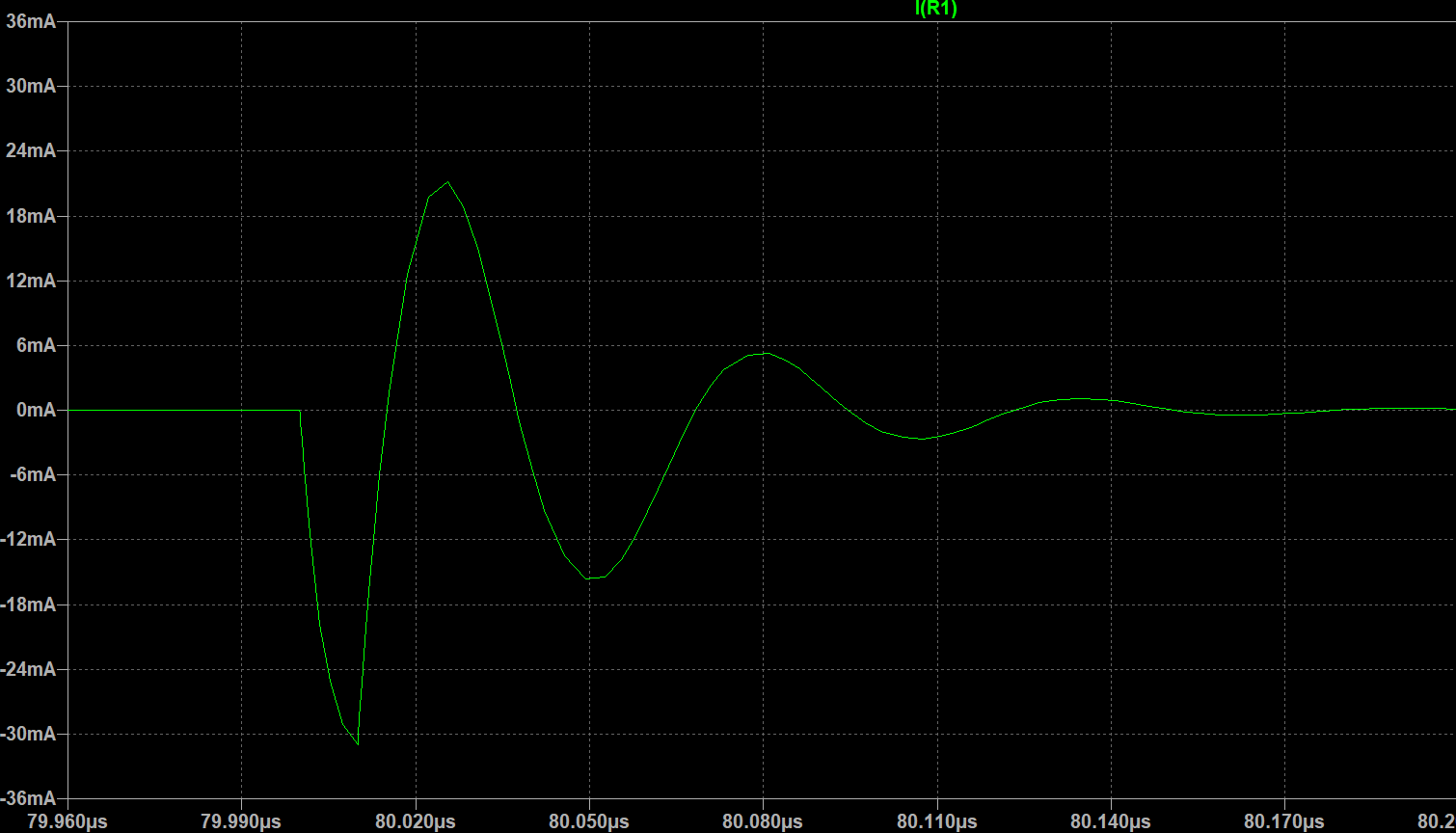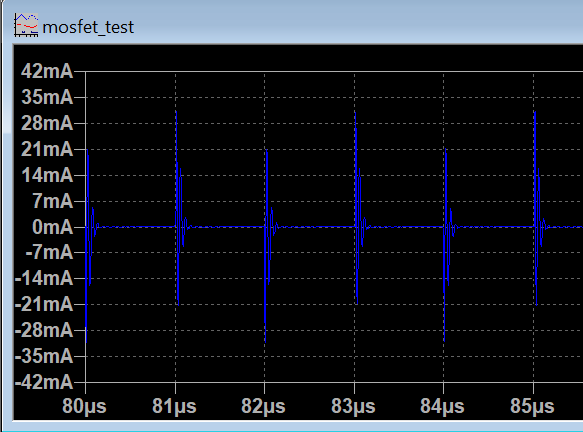I have been trying to simulate a fully controlled full bridge using SiC MOSFETs and so far haven't gettng at least expected results. So I tried to check what is happening using a single MOSFET and a simple circuit like this -

However, when I run the simulation, the current through the resistor looks like this -
I need to uderstand what I am doing wrong while simulating this circuit.
1. Does the gate need a resistor in series ?
2. The floating terminals of the MOSFET are Tj and Tc (temperatures) I have assumed that they can be kept floating.
Update-
Zoomed in waveform -
 Edit -
Edit -
The MOSFET is rated at 1200V and 90A. The simulation works fine up until Vds as ~55V. Thereafter it breaks down and shows these similar results for any voltage above ~55V

